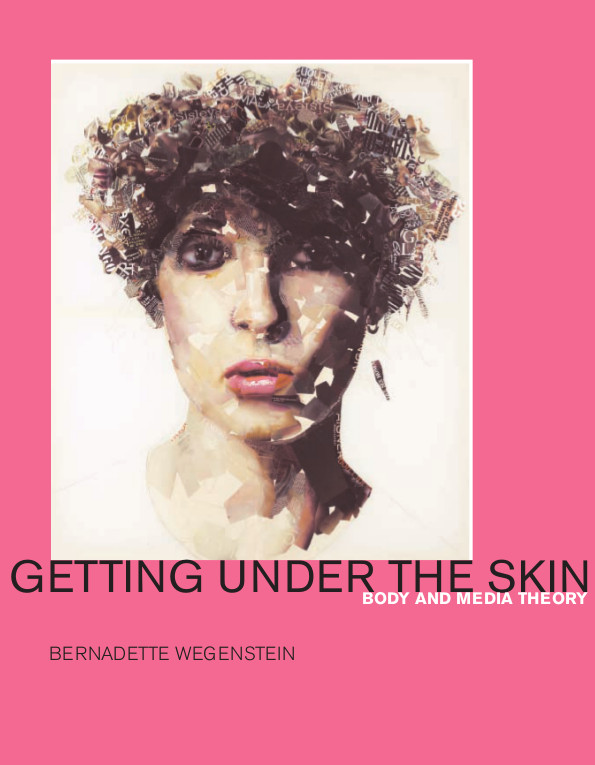ZtG Bulletin 24 Texte: Cyberfeminismus. Feministische Visionen mit Netz und ohne Boden? (2002) [German]
Filed under journal | Tags: · body, cyberfeminism, feminism, gender, internet, technology, women
Issue of ZtG Bulletin dedicated to cyberfeminism. Published by Center for Transdisciplinary Gender Studies at Humboldt-Universität in Berlin.
Erschienen im Februar 2002
Publisher: Zentrum für transdisziplinäre Geschlechterstudien an der Humboldt Universität zu Berlin
Verantwortlich: Dr. Gabi Jähnert, Geschäftsführerin
authors
PDF (PDF articles)
Download other issues
Warren Neidich: Blow Up: Photography, Cinema and the Brain (2002)
Filed under paper | Tags: · body, brain, cinema, painting, photography, sublime
In Blow-Up, Warren Neidich proposes a different and wholly original paradigm for thinking through cultural history and the philosophy of the human subject. Across the theoretical landscape that Neidich describes, even familiar monuments from the history of art, architecture, philosophy and aesthetics appear strange and disorienting, because the starting point of the primary and secondary repertoires (the nervous system and the pathways of connection built up through interaction between the brain and the outside world) is so totally unexpected. Crucial to Neidich’s narrative is the idea that, in modernity, the technologies that have evolved in the sphere of visual communication have come to operate on the subject with particular vehemence, not only in the realm of meaning but in their determining influence on the primary habits and dispositions of experience. Photography, cinema, television, the internet–as the forces of spectacle gain ever-wider currency in a rapidly globalizing world, those cultural forms that emerge as dominant in the competition for structuring the pathways of consciousness will annex and colonize more and more of the subject’s interior life, worldwide. But Neidich suggests that the subject of culture has the ability to remap itself, rewire itself, and assume forms so creative and protean that it will always outrun the forces that seek to limit its plasticity–even trauma and amputation cannot irreversibly damage the neural body.
Published in Journal of Neuro-Aesthetic Theory #2 (2000-02): Cinema and the Brain
Later published within the book “Blow-up: Photography, Cinema and the Brain” (DAP/UCR/California Museum of Photography, 2003).
PDF (added on 2013-8-21)
Read online (HTML)
Bernadette Wegenstein: Getting Under the Skin: The Body and Media Theory (2006)
Filed under book | Tags: · body, cyborg, phenomenology, posthumanism, psychoanalysis

The body as an object of critical study dominates disciplines across the humanities to such an extent that a new discipline has emerged: body criticism. In Getting Under the Skin, Bernadette Wegenstein traces contemporary body discourse in philosophy and cultural studies to its roots in twentieth-century thought—showing how psychoanalysis, phenomenology, cognitive science, and feminist theory contributed to a new body concept—and studies the millennial body in performance art, popular culture, new media arts, and architecture.
Wegenstein shows how the concept of bodily fragmentation has been in circulation since the sixteenth century’s investigation of anatomy. The history of the body-in-pieces, she argues, is a history of a struggling relationship between two concepts of the body—as fragmented and as holistic. Wegenstein shows that by the twentieth century these two apparently contradictory movements were integrated; both fragmentation and holism, she argues, are indispensable modes of imagining and configuring the body. The history of the body, therefore, is a history of mediation; but it was not until the turn of the twenty-first century and the digital revolution that the body was best able to show its mediality.
After examining key concepts in body criticism, Wegenstein looks at the body as “raw material” in twentieth-century performance art, medical techniques for visualizing the human body, and strategies in popular culture for “getting under the skin” with images of freely floating body parts. Her analysis of current trends in architecture and new media art demonstrates the deep connection of body criticism to media criticism. In this approach to body criticism, the body no longer stands in for something else—the medium has become the body.
Publisher MIT Press, 2006
ISBN 0262232472, 9780262232470
211 pages
PDF (updated on 2013-1-29)
Comment (0)
